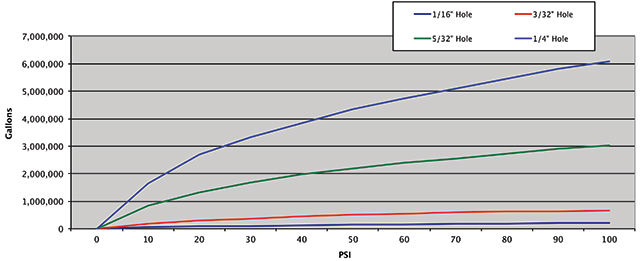VFDs can reduce energy consumption and water loss in variable pumping systems.
09/07/2015
As the cost of energy and water and wastewater services continues to rise, operators are looking for ways to reduce the costs of these basic, yet crucial, utilities. Proposed energy efficiency standards from the U.S. Department of Energy (DOE) and other federal measures could help. In the water sector, the DOE has a mandate to develop and enforce national minimum energy efficiency standards for any product if significant savings can be realized in a cost-justified and technically feasible manner. During the past year, the DOE and stakeholders have been negotiating a regulation for pump efficiency. That rule, now in the Notice of Proposed Rulemaking (NOPR) phase, would apply only to clean water pumps of these types:
- End suction close-coupled
- End suction frame-mounted/own bearings
- In-line
- Radially split, multi-stage, vertical, in-line, diffuser casing
- Vertical turbine submersible
 These calculations show that the power to run a pump is relative to the cube of the speed. If a pump is slowed by 20 percent, it will experience a nearly 50 percent reduction in power or energy consumption. Even small decreases in speed can result in energy savings. VFDs can also regulate the pressure of water distribution systems. Before VFDs were commonly used, water distribution systems typically incorporated pressure switches to control pumps. When the system hit a low pressure point, the pump turned on; when it hit a higher pressure point, the pump shut off. A facility may have used two pumps: a smaller one for slow night hours and a larger unit for during the day. While this type of control often causes pressure fluctuations, it is common practice.
A VFD can maintain pressure at a constant set point by increasing pump/motor speed. By maintaining constant system pressure, a VFD can help reduce water leakage. For example, a ¼-inch hole in a distribution pipe can leak as much as 4 million gallons per year at 50 pounds per square inch (psi) or more than 5 million gallons per year at 80 psi. By keeping the pressure more constant, VFDs can help reduce non-revenue water losses (see Figure 1).
These calculations show that the power to run a pump is relative to the cube of the speed. If a pump is slowed by 20 percent, it will experience a nearly 50 percent reduction in power or energy consumption. Even small decreases in speed can result in energy savings. VFDs can also regulate the pressure of water distribution systems. Before VFDs were commonly used, water distribution systems typically incorporated pressure switches to control pumps. When the system hit a low pressure point, the pump turned on; when it hit a higher pressure point, the pump shut off. A facility may have used two pumps: a smaller one for slow night hours and a larger unit for during the day. While this type of control often causes pressure fluctuations, it is common practice.
A VFD can maintain pressure at a constant set point by increasing pump/motor speed. By maintaining constant system pressure, a VFD can help reduce water leakage. For example, a ¼-inch hole in a distribution pipe can leak as much as 4 million gallons per year at 50 pounds per square inch (psi) or more than 5 million gallons per year at 80 psi. By keeping the pressure more constant, VFDs can help reduce non-revenue water losses (see Figure 1).
 Figure 1. Water losses at different operational pressures (Courtesy of Danfoss)
Figure 1. Water losses at different operational pressures (Courtesy of Danfoss)- Protection of pumps and assets
- Reduction of maintenance costs
- Lower risk of bacteria/contamination of tap water
- Lower risk of road breaks
- Reduction in pipe repair cost
- Extended service life of network
- Postponed investment in system upgrades
- Improved control performance
- Increased redundancy
- Reduced load on supervisory control and data acquisition (SCADA) system because of dedicated VFD software features

